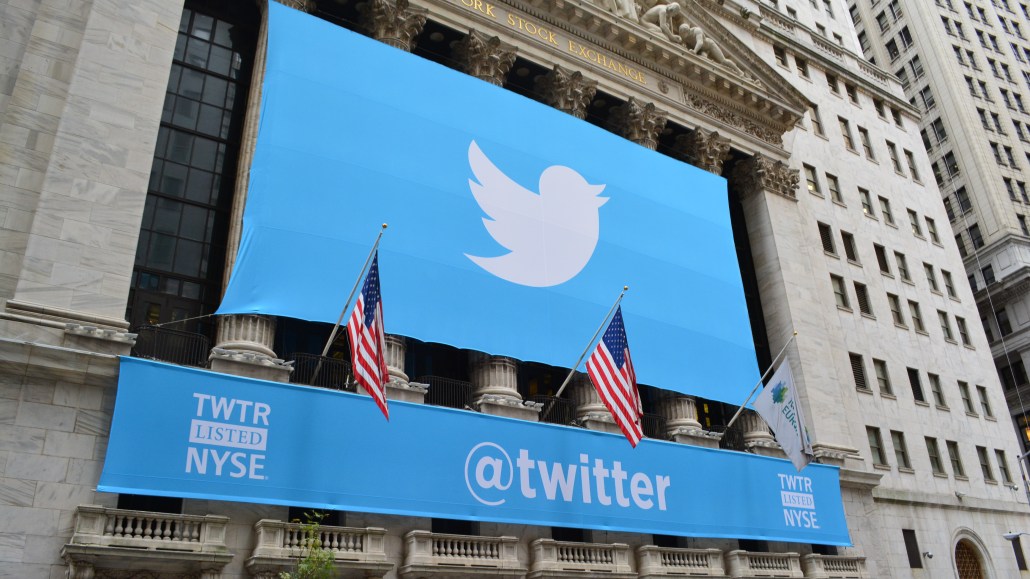
Only in the mixed up, muddled up, shook-up world of digital media could a company with nearly 300 million monthly active users, hundreds of millions of dollars in quarterly revenue and a market cap north of $20 billion risk being considered too small.
But that was exactly what happened to Twitter all throughout 2014, especially in December when Facebook-owned Instagram announced it had more than 300 million monthly active users prompting at least one media type to proclaim Instagram is “clobbering” Twitter in a message posted to Twitter — without the slightest sense of irony.
.@om nails it. Digital is a visual medium. That’s why Instagram clobbering Twitter https://t.co/BLIPlxFZBv
— Henry Blodget (@hblodget) December 12, 2014
If 2014 taught us anything about Twitter, it’s that this “not enough users” narrative will likely haunt Twitter going forward. Here’s what else we learned about Twitter in 2014:
Growth problems
If all the coverage of the platform over the year was to be believed, Twitter remained essentially stagnant over the year. However, in reality Twitter did grow, with its number of monthly active users — the number of people who use or log in to or use the service at least once a month — up to 284 million worldwide as of the third quarter, up from 241 million in the fourth quarter of 2013 (which ended Feb. 5, 2014).
There is concern, however, that Twitter’s year-to-year growth rate is plateauing. Those worries were inflamed by Instagram’s reaching 300 monthly active users, making Facebook the proud owner of the two most popular social networks on the planet (and that’s not counting Facebook-owned WhatsApp, which boasts 600 monthly active users).
The number of critics of Twitter (the company) who have built $25B+ companies that double revenue each year is remarkably low. — Marc Andreessen (@pmarca) November 7, 2014
It’s about the influence, stupid
Twitter’s main rebuttal to such criticisms has been to emphasize how outsized its cultural influence is relative to the size of its user base. Twitter execs routinely stress that tweets have become staples of broadcast and digital news coverage, and that when news breaks, the immediate conversation exists on Twitter.
As Twitter co-founder Evan Williams explained in an interview with Fortune:
“It’s a question of breadth versus depth. … Important stuff breaks on Twitter and world leaders have conversations on Twitter. If that’s happening, I frankly don’t give a shit if Instagram has more people looking at pretty pictures.”
And the events in Ferguson, Missouri, this summer proved this to be true.
Monetizing influence (at some point, maybe)
While Twitter’s claims to influence are ostensibly legitimate, they do little for Twitter’s bottom line (as of now). Twitter is not serving ads against tweets that appear in broadcasts or are embedded on other websites, thus rendering that argument financially moot. Twitter tried to increase the number of ads it serves off of Twitter with MoPub, the mobile ad network it bought in 2013, and Fabric, software it released in the fall to help developers integrate Twitter (and MoPub ads) into their mobile apps.
That Twitter spent the year pointing out the ubiquity of tweets suggests that it hopes to some day figure out how to monetize its presence through other websites or in telecasts. And indeed, Twitter CEO Dick Costolo routinely spoke about one day monetizing that yet untapped reach. Exactly how that will be accomplished, however, remains unknown.
New features
Twitter also approached its growth problem by integrating a number of new features over the year.
Last October, Twitter changed cards so photos and videos auto-rendered in streams. It expanded upon that in March by allowing users to post multiple photos at one time. In June, it rolled out app install ads, a major mobile ad revenue source for chief rival Facebook. Twitter also got into e-commerce by way of a partnership with Amazon started in the spring and the launch of its heavily anticipated commerce feature, which added a buy button to promoted tweets, this past fall.
The experimentation is far from over: At South by Southwest in March, Twitter’s vp of global online sales said card innovation would continue as the company was looking at features such as a click-to-call button for local businesses.
Those changes were tame relative to the one that speaks most directly to Twitter’s use problem.
To algorithm or not to algorithm?
Twitter diehards erupted with outrage in September when Twitter CFO Anthony Noto said that Twitter would be introducing a feed that would display tweets algorithmically instead of the current model which allows users to choose whose tweets they’d like to see.
The idea behind this change — which has already started — is that it will make Twitter more palatable to Internet users who sign up for the service only to never use it. Curating a list of followers and learning Twitter’s native tongue — with its proliferating hashtags and @ mentions — can overwhelm the uninitiated, and this is a potential remedy. The rub is that Twitter diehards view the non-algorithmic feed as sacrosanct, the one feature preventing the service from becoming more like Facebook.
The conflict gets at the very heart of Twitter’s conundrum: Is it better to service an influential few or to change the core product in the name of servicing the many? Check back in a year for the answer.
More in Media

Digiday+ Research: Publishers’ growing focus on video doesn’t translate to social platforms
Major publishers have made recent investments in vertical video, but that shift is not carrying over to social media platforms.

Technology x humanity: A conversation with Dayforce’s Amy Capellanti-Wolf
Capellanti-Wolf shared insight on everything from navigating AI adoption and combating burnout to rethinking talent strategies.

How The Arena Group is rewriting its commercial playbook for the zero-click era
The company is testing AI-powered content recommendation models to keep readers moving through its network of sites and, in doing so, bump up revenue per session – its core performance metric.





